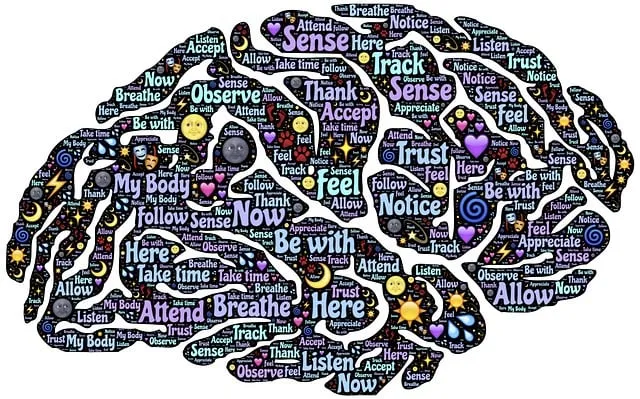The Superior Kaiser Permanente mental health facility prioritizes data-driven care for enhanced patient outcomes. Utilizing advanced tools like machine learning and natural language processing, they analyze mental health data to personalize interventions, predict treatment progress, and identify at-risk patients early on. This multi-faceted approach includes risk assessments, coping skills development programs, and effective communication strategies, fostering a holistic and personalized mental healthcare experience. By aggregating patient records and analyzing trends, the facility informs Burnout Prevention Strategies for Healthcare Providers and enhances community outreach program successes, ultimately shaping effective mental health system strategies.
Mental health data analysis is a powerful tool for understanding complex patient populations. At the renowned Kaiser Permanente, a superior mental health facility, data collection methods are revolutionizing care. This article explores how advanced analysis techniques, from sophisticated algorithms to machine learning models, provide deeper insights into patient well-being. We delve into interpreting results, identifying trends, and patterns that can guide clinical decision-making. Additionally, strategies for effectively communicating these findings ensure informed care plans at the superior Kaiser Permanente mental health facility.
- Understanding Mental Health Data Collection at Kaiser Permanente
- Advanced Analysis Techniques for Deeper Insights
- Interpreting Results: Identifying Trends and Patterns
- Strategies for Effective Communication of Findings
Understanding Mental Health Data Collection at Kaiser Permanente

At Kaiser Permanente, a superior Kaiser Permanente mental health facility, data collection plays a pivotal role in understanding and improving patient outcomes. The organization employs advanced tools and methods to gather comprehensive mental health data, ensuring it captures not just symptoms but also lifestyle factors, social determinants of health, and treatment responses. This multi-faceted approach allows for a nuanced view of each patient’s mental well-being.
Through rigorous risk assessments conducted by mental health professionals, Kaiser Permanente identifies individuals at higher risk of mental health deterioration or suicide. This proactive strategy enables the facility to implement targeted interventions, including coping skills development programs, to mitigate risks effectively. By integrating these data-driven practices, Kaiser Permanente not only enhances its ability to manage mood but also fosters a more holistic and personalized approach to mental healthcare.
Advanced Analysis Techniques for Deeper Insights

At the Superior Kaiser Permanente mental health facility, cutting-edge data analysis techniques are revolutionizing patient care. Beyond basic statistical methods, advanced analytical tools like machine learning and natural language processing (NLP) enable deeper insights into patient emotional landscapes. These technologies can uncover intricate patterns within vast datasets, providing valuable information about risk factors, treatment responses, and trends in mental health conditions such as depression and stress.
By leveraging these superior Kaiser Permanente mental health facility resources, healthcare providers can tailor interventions more effectively. For instance, NLP can analyze clinical notes to identify patients at higher risk of depression or those who may benefit from specific Emotional Well-being Promotion Techniques. Similarly, machine learning models can predict patient progress, helping to streamline treatment plans and optimize Stress Reduction Methods. Such sophisticated data analysis not only enhances the quality of care but also contributes to ongoing research, ultimately paving the way for more proactive and personalized mental health services.
Interpreting Results: Identifying Trends and Patterns

When analyzing mental health data at a superior Kaiser Permanente facility, interpreting results involves carefully identifying trends and patterns that can provide valuable insights. This process begins with a comprehensive review of individual patient records, considering factors such as diagnosis, treatment history, and response to various interventions. By aggregating and analyzing this data, healthcare professionals can uncover recurring themes and correlations, offering a deeper understanding of the population’s mental health needs.
For instance, patterns might reveal a higher prevalence of burnout among certain specialties or demographics, pointing towards the need for tailored Burnout Prevention Strategies for Healthcare Providers. Conversely, trends in community outreach program implementations could demonstrate successful interventions that boost Confidence and overall well-being. Such insights are crucial for designing effective strategies and allocating resources to address specific mental health challenges within the healthcare system.
Strategies for Effective Communication of Findings

At the Superior Kaiser Permanente mental health facility, effective communication of data-driven findings is paramount to ensuring positive patient outcomes and fostering a culture of mental wellness. To achieve this, healthcare professionals must employ strategies that bridge the gap between complex analytical insights and understandable, actionable recommendations. This involves simplifying technical jargon, using visual aids like graphs and charts, and tailoring the communication style to suit diverse patient populations.
By integrating these strategies, mental health practitioners can enhance patient engagement, encourage adherence to treatment plans, and promote self-care practices. For instance, presenting Anxiety Relief and Stress Reduction Methods as practical tools accessible through personalized therapy sessions can empower individuals to actively manage their mental wellness. This approach not only improves patient satisfaction but also contributes to the overall success of intervention programs at the Superior Kaiser Permanente facility.
The comprehensive analysis and interpretation of mental health data at superior Kaiser Permanente facilities empower healthcare professionals to make informed decisions. By employing advanced techniques, such as sophisticated statistical methods and machine learning algorithms, these organizations gain valuable insights into patient populations, treatment effectiveness, and emerging trends. This enables tailored interventions and improved outcomes, ultimately enhancing the quality of care provided by leading mental health facilities like Kaiser Permanente.
